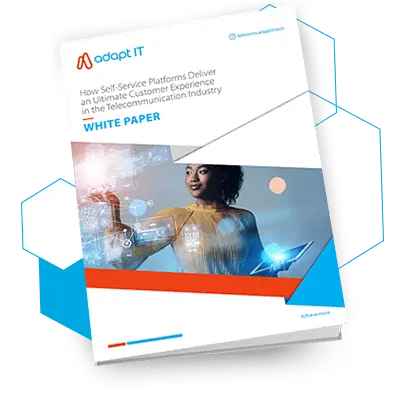According to PWC, the insurance industry is being disrupted more than any other industry, providing adversity for some, and opportunity for others.
Table of Contents
ToggleNew competitive threats, outdated technology, increasing regulatory requirements, all-around less-than-ideal financial performance, and external developments such as IoT and AI are a few of the areas that demand dramatic change and completely new business models.
There’s a natural fear that technology will do to insurance what Instagram did to Kodak and Netflix to Blockbusters.
The pace of change in the insurance industry is even more rapid than anticipated and is set to accelerate. The insurance industry faces a crossroads as it wrestles with evolving customer expectations, new technologies, and new distribution and business models.
Insurtech is one of the major disruptors to what’s commonly known as a staid, old-school industry.

Insurtech: digital disruption for insurers
Short for insurance technology, insurtech is a subcategory of fintech (financial technology); a technology for insurers that will change the way the industry has always done things.
Insurtech is technologies that are designed to improve the operational efficiency and efficacy of insurance companies.
Now, technology in the insurance industry is obviously not new, but insurtech are technologies that bring innovation and revolution: types of insurtech include:
- Artificial intelligence
- Machine learning
- Internet of Things
- Smartphone applications
- Drones
Artificial intelligence in machine learning-powered apps is a large reason for the rapid rise of insurtech, as they can process massive amounts of data that are needed to improve efficiency and effectiveness.
Personalised and more small business policies and customer-facing applications are all some of the applications of insurtech.
Insurtechs bring innovation to the sector, unleashing a competitive threat or valuable opportunity.
The rise of insurtechs

Insurtechs have risen in the insurance space over the last few years. According to McKinsey, investments have “grown by leaps and bounds – whereas $140 million was invested annually in 2011, investment climbed to $270 million in 2103, and $2.7 billion in 2015.”
On average, investments into insurtechs rose fivefold from 2011 to 2015.
Most insurtech homes are situated in the US, UK, and Germany, but Asia-Pacific is expected to grow the most rapidly as it picks up speed.
Insurtechs have become active in all major insurance products and services, with a focus specifically on P&C business, marketing, and distribution.
The future of insurance
Artificial intelligence (AI) is key in the rise of insurtechs, and is expected to drive all major business decisions in insurance in the coming years.
Artificial intelligence
As it is, AI is driving insurance primarily in the areas of:
- Customer experience
- Process optimisation
- Product innovation

Omni:us, an insurtech based in Berlin, partner with startups and traditional insurers. Martin Micko, founder and COO, says, “Our AI keeps learning through elements like transfer learning [storing knowledge gained while solving one problem and applying it to a different but related problem] so even with documents the system has never seen, the AI engine processes them correctly in a similar way to a human being.” [Source]
AI can spot and as a result, stop fraud, and dramatically enhance the customer experience.
Analytics
Analytics has to become the foundation of operational activities, with all decisions based on meaningful insights collected from data.
As insurers start the digital transformation, analytics especially is the one technology most needed in order to gain insights into what may be a perilous time, as the company shifts from here to there.
Analytics drives operational efficiency in insurance, allowing for better customer management which feeds into the customer experience, minimising loss ratios and creating robust risk and compliance frameworks, all the while ensuring profitability.
Analytics is the springboard for actionable insights and is a critical success factor that contributes to differentiation.
In the future, predictive analytics will identify suitable products for customers based on demographics that go far beyond the traditional cross-selling and upselling approaches generally utilised by insurers.
Since customer experience is the new marketing, data analytics will drive the creation of personalized user experiences.
For insurers, analytics will identify opportunities for new products, prevent fraud, provide meaningful insights, reshape the risk and compliance space and allow for better risk evaluations, to name but a few.
Next steps
EY says, “The most effective digital transformations are those that balance near-term value with long-term evolution.” Speed to market and organisational agility is essential. A phased approach is recommended:

To begin the digital transformation journey, and achieve a quick win, insurers can start by incorporating mobile apps, customer and agent portals, paperless processing, and integrated systems.
Adapt IT|Telecoms offers the vital first steps for insurance solutions that allow your company to go paperless.
Top insurers are already offering customers the use of a mobile app with which to conduct their insurance business. This in turn, frees up employee time from conducting repetitive chores. It also saves paper and mailing costs. At the same time, a mobile app enhances the customer experience by providing self-service that is convenient and fast.
Once the business has completed phase 1 of the digital transformation, it can progress to more advanced capabilities.
Conclusion
Digital technologies and analytics will continue to change how we live, work, and play. They will also be the driving force of the future; offering opportunities like never before in the history of insurance.
Explore the Power of CDR

Steven Sutherland experienced Adapt IT Divisional Executive, dynamic business leader for their Telecoms Division with a demonstrated 25-year history in the telecommunications and IoT sectors. Strong global marketing, sales, and business development professional with 15 plus years focused experience in the Southern and Rest-of-Africa markets and a unique blend of entrepreneurial spirit combined with a passion for both technology and business.
At Adapt IT Steven is responsible for building and growing the Telecoms Division on top of its industry-proven software competencies including but not limited to Customer Experience and Self Service, NextGen VAS, IoT, FINTECH, and Advanced Analytics. Steven is always looking forward to an opportunity to demonstrate the value that his 20 plus years of experience in these disciplines can bring to your business





